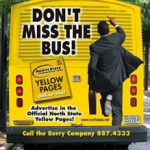 By Peter Galuszka
By Peter Galuszka
Inner city issues seem to be a trend this week on the blog so here are a few more points about the so-called “under-class” as some define lower income, under privileged people. The locus is Richmond, the state capital that despite its pretensions is actually a working class town with plenty of inner city issues.
One topic is the concept of “food deserts” where adequately fresh and nutritious vegetables, fruit, meat and seafood are not available for whatever reason.
In Richmond, the areas where this tends to happens are in primarily African-America sections to the downtown’s northeast and immediate south plus some pockets here are there. Mind you that the outer suburbs of Henrico and Chesterfield Counties are among the state’s wealthiest and whitest.
That’s where the nice stores are but they are out of reach for many of the urban poor, especially the elderly and disabled who do not have cars. It is a problem for them to even get to some of the bigger inner city grocery stores, such as a Kroger on North Lombardy Street near the city’s famed Jackson Ward neighborhood that had been a highlight of the early 20th century’s African-American cultural renaissance but was destroyed by white highway planners who put Interstate 95 smack through the area in the 1950s.
A cursory Web search shows that’s about the only large food store in that general area. One reason it survives is that it also serves thousands of students at Virginia Commonwealth University, the state’s largest public college, a few blocks away.
If one takes a GRTC Transit System bus on nearby Broad Street, one sees poor people traveling with grocery bags to the Kroger since it’s the only stores of any size for most of Richmond’s public housing projects. But that’s about as far as many can go.
Why? Richmond ranks 95th among 100 metro areas for public transit, According to a new Brookings Institution report, Richmond’s bus coverage (there is not light rail) pretty much ends at the city limits.
Less than half of all jobs in the area are within the GRTC coverage area. Richmond ranks only 82nd for its labor access rate, according to the report. So let’s say that some poor inner city denizen reads Ayn Rand one morning and wants to get a job and become a well-paid objectivist. That job is likely to be out of reach of the bus service – somewhere out in the strip malls of the suburbs. The only solution: buy a car.
Overall, prideful Richmond ranks slightly below Birmingham, Ala. and above Augusta, Ga., rather impressive company. The places with the best public transit are so socialistic and free-spending hotbeds as Honolulu, Los Angeles and San Mateo. New York ranks highly, too.
The problem is that many Virginians tend to be conservative and anti-spending. Some are also smart growthers who in principle agree that expanding public transit is a good idea as opposed to automobiles.
The little-spoken problem is that many actually want to keep two separate societies, just like the Jim Crow days. The poor blacks and Latinos can stay in the inner city. We’re not going to fund public transit so they can shop next to us or get to jobs near us. If some of them are middle-class and well-educated, fine, we’ll accept them.
Just don’t muck up our lily white suburbs with the poor and unwashed and dark-skinned.


